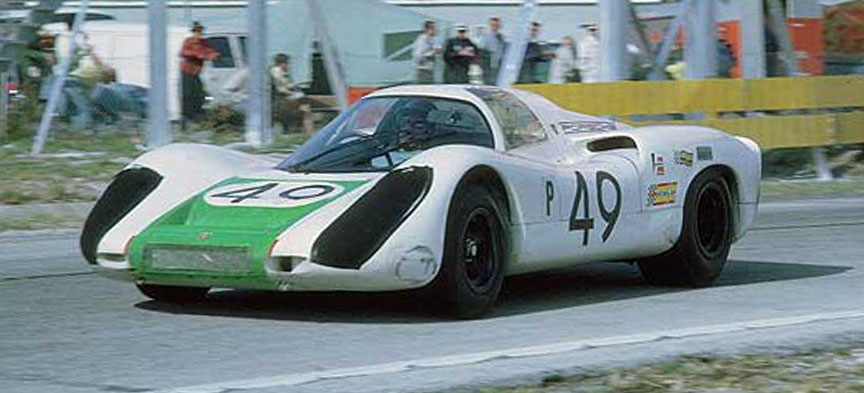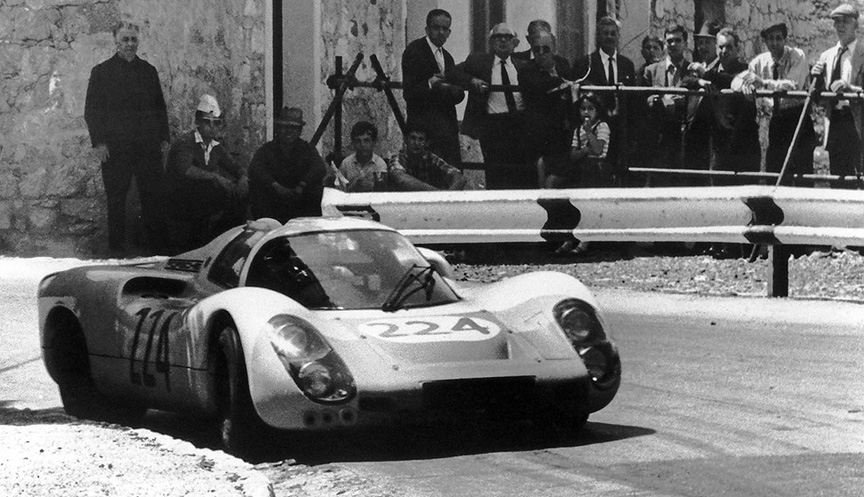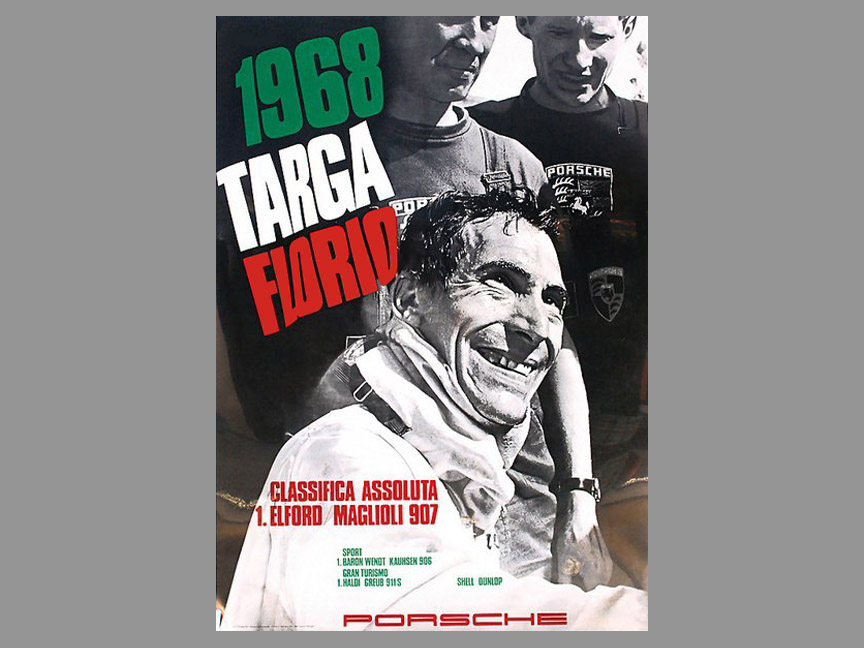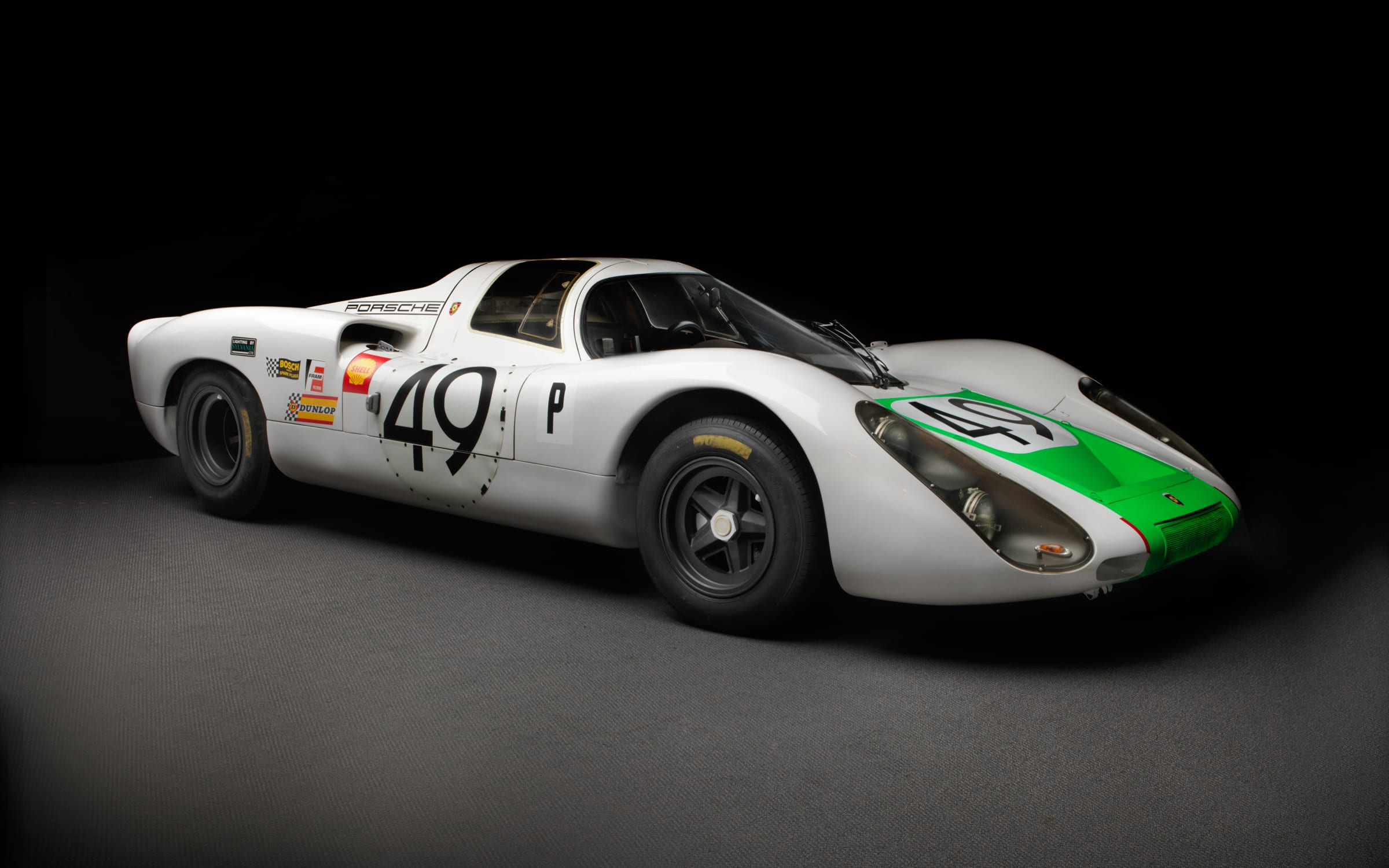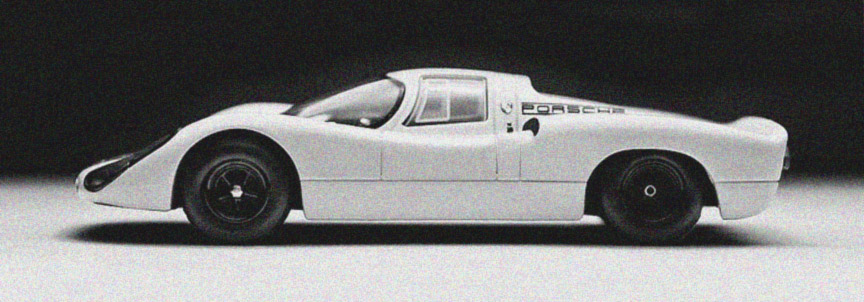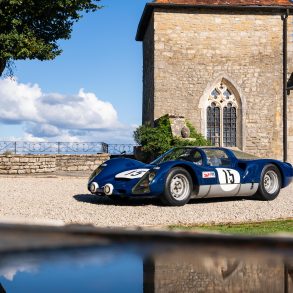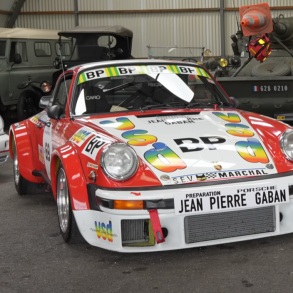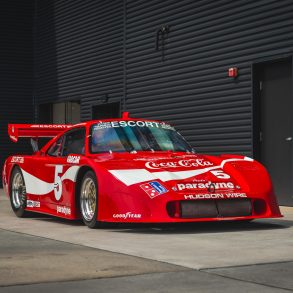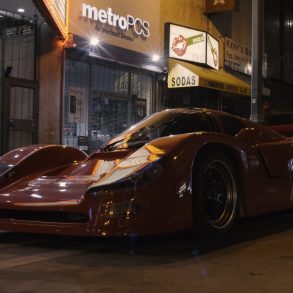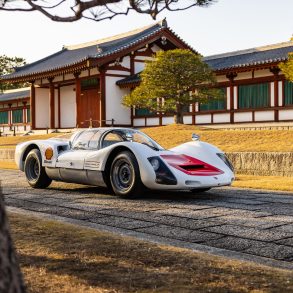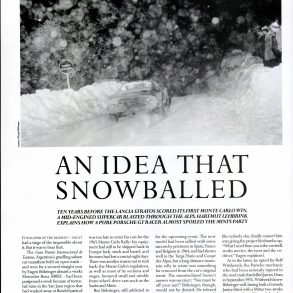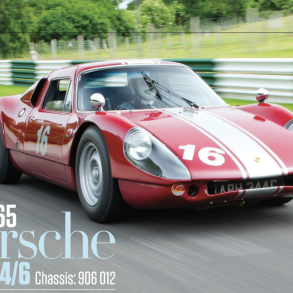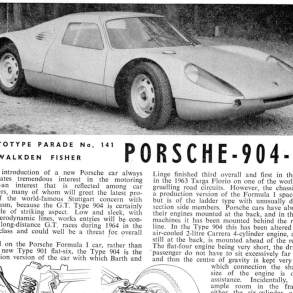Porsche 907 K (1967 – 1968)
Premiere: 1967 December 8, Hockenheim ring (Press day) / Accomplishment: 1968 Targa Florio winner / Engine: 2.0 771/0 & 2.2 771/1 Flat-8 / Number Produced: ~4 units / Wheelbase: 90.6 inches / Weight: 1320 lbs / Power: 256 bhp @ 8700 rpm (771/0) & 271 bhp @ 8700 rpm (771/1) /
The original 907 factory manual for customer teams said: Wir wünschen Ihnen mit Ihrem Porsche 907 “Hals- und Beinbruch und viele sportliche Erfloge (We wish you with your Porsche 907 “neck and leg break and many sporting accomplishments). This is so results oriented – so Ferdinand Piëch.
On March 23, 1968, Porsche factory team entered four short-tail (“Kurz” in German) 907 K at the Sebring 12 hour race. #49 car of Jo Siffert and Hans Herrmann started from pole position and won the race. #51 car of Vic Elford and Jochen Neerpasch finished second. The competition at the race was not very strong – there were only three Ford GT40s, three Lolas and the turbine-engined Howmet TX, a Porsche 910 and the rest were GT cars.
Two weeks later, Porsche lined up four 907 K at Brands Hatch 6 hours. Gerhard Mitter and Ludovico Scarfiotti (907 K 2.2 #38) won the up to 3-litre class and scored second overall after a Ford GT40. Vic Elford and Jochen Neerpasch (907 K #36) finished 3rd overall.
Four weeks after Brands Hatch, Porsche factory team took five 907 K to the 1968 Targa Florio – four cars for the race and a backup car. The latter was needed when Ludovico Scarfiotti crashed his car in the practise. Vic Elford was the fastest driver in the race, but lost 18 minutes on the first lap due to a tyre failure. Still, together with Umberto Maglioli they won the race in their 907 K #224.
At the 1968 Nürburgring 1000 km race Hans Herrmann and Rolf Stommelen finished second in their 907 K 2.2 #3 after a winning Porsche 908 with larger 3-litre engine. The 907 and 908 look almost the same, the main difference is in the engine size. A week later, at Spa 1000 km, Gerhard Mitter and Jo Schlesser drove a 907 K to second place after a 4.7-litre Ford GT40.
Official Porsche 907 engine specs from 1968
| Specs | 2.0-litre flat-8 | 2.2-litre flat-8 |
| Type | 771/0 | 771/1 |
| Power | 260 PS (191 kW / 256 SAE hp) |
275 PS (202 kW / 271 SAE hp)
|
| Torque | 21 mkp (152 lb-ft / 206 Nm) |
23 mkp (166 lb-ft / 226 Nm)
|
These specs are from the service manual released in the end of 1968, so it suggest that at least one car was ordered with the 2.0-litre flat-8, although it is more likely that all the cars were ordered with the 2.2-litre engine.
Private racing teams continued to use the 907 short-tail cars in national races where many wins and other podium places were taken. The most notable results were a third at the 1969 Monza 1000 km achieved by Gerhard Koch and Hans-Dieter Dechent behind two Porsche 908 and another third place at the 1969 Barcelona 12 hours achieved by Eugenio Baturone and José Palomo also behind two 908.
A Visual History
